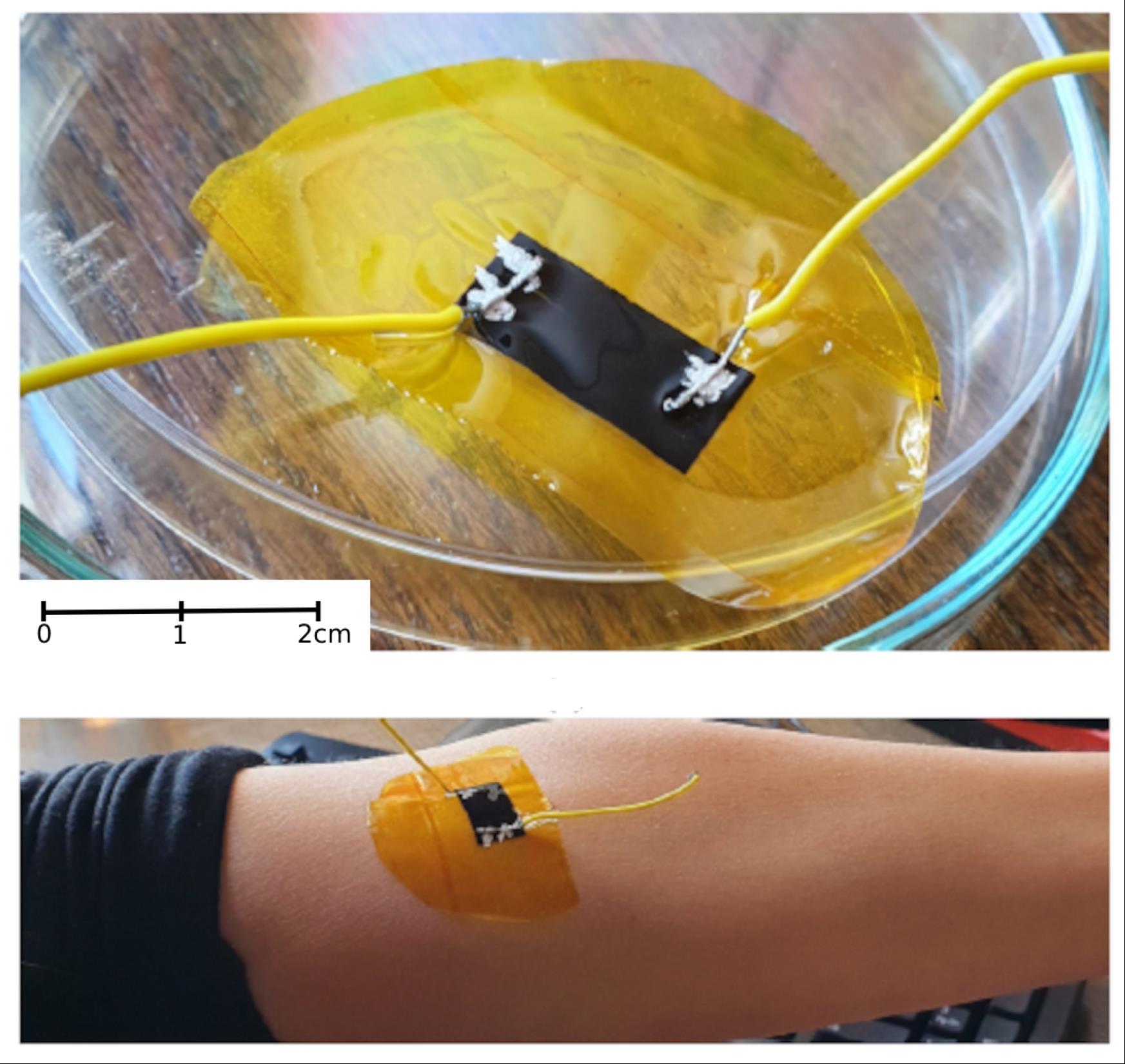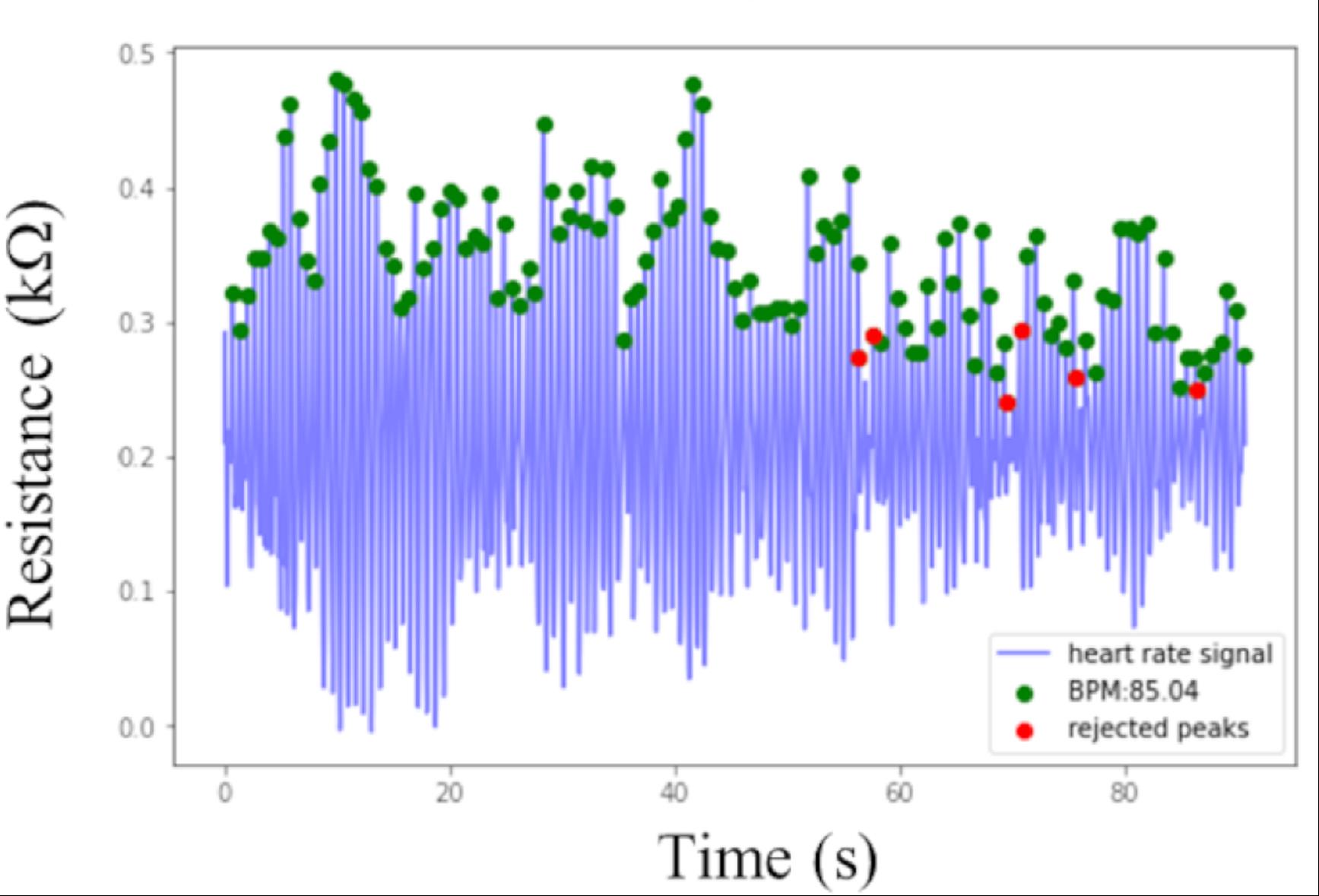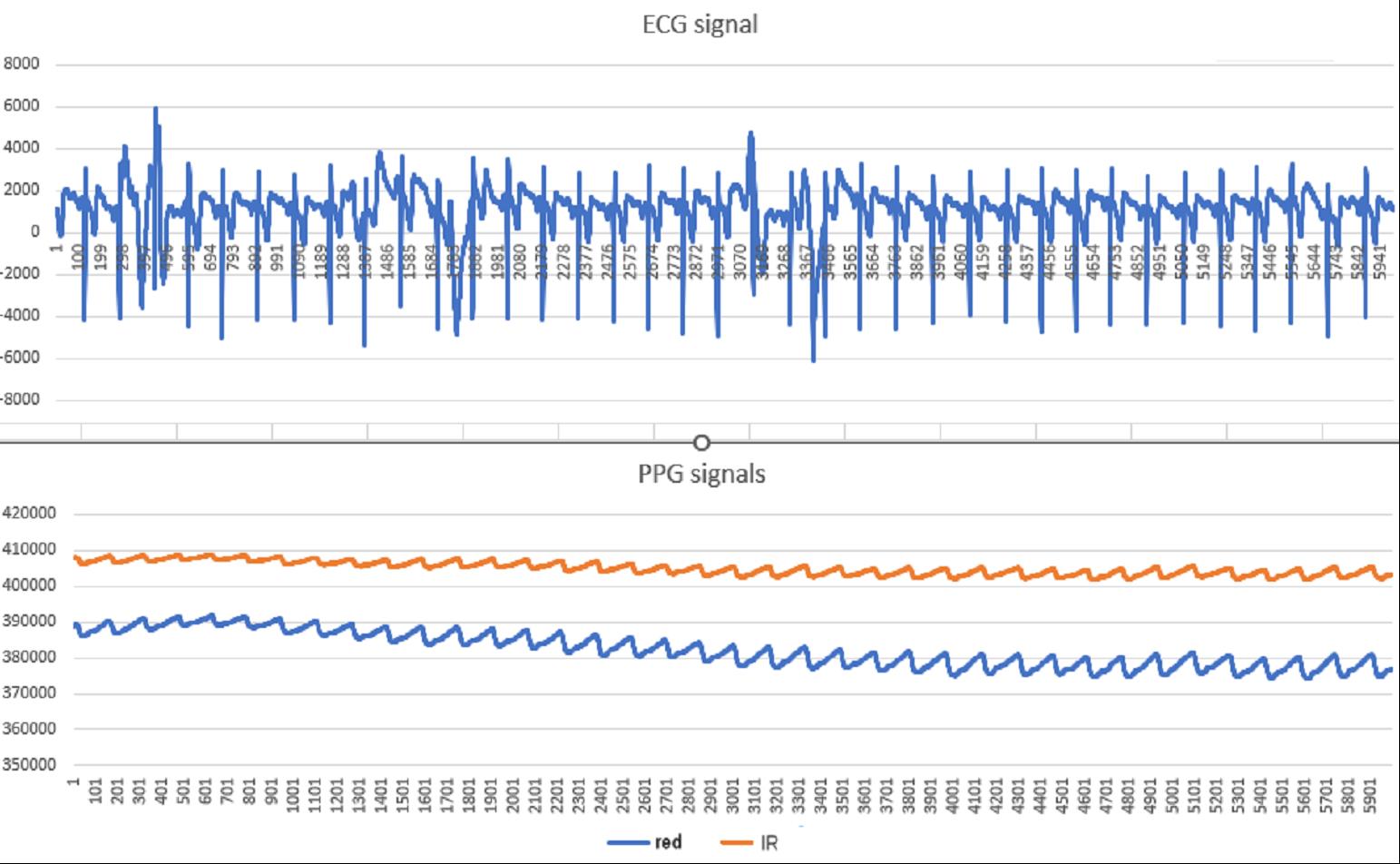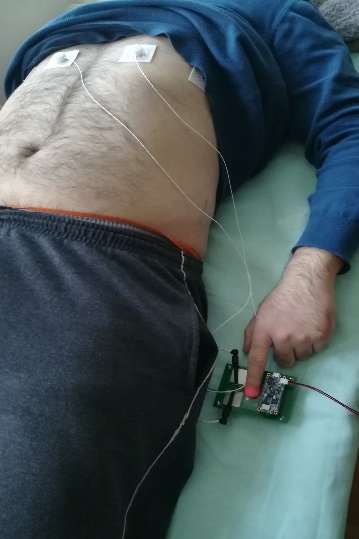Sensing and processing signals for monitoring vital signs using a wearable system
Investigators: Lehocki F., Tyšler M., Gogola D., Bagín R., Madevska Bogdanova A., Koteska B., Spasenović M., Vićentić, T. et al.
As part of the NATO project, sensors were designed and methods were developed for monitoring the vital functions of mass casualty victims using a wearable system. The proposed resistive sensors based on laser-deposited graphene layers have been tested for both heart and respiratory rate monitoring (SF and DF) [1]. Covering or enveloping the sensor with a layer of polydimethylsiloxane increased the noise of the sensor and the standard deviation of the determination of the R-R interval increased from 31 to 51, respectively. 110 ms, however, SF was still within 2.5 beats/min. against the reference measurement. Using a commercial integrated module, a sensor functional pattern and ECG and PPG signal sensing methods were designed and SF, DF and oxygenation extraction methods were compared [5]. An algorithm based on the variability of the R-wave peaks, where the RMS error compared to the reference measurement was 0.168 breaths/min, proved to be the most suitable for determining the DF. With the use of available databases, methods based on machine learning were tested for the prediction of oxygenation from the characteristics of the scanned PPG signals [2] and the possibilities of classifying blood pressure using the scanned ECG and PPG signals using neural networks were investigated [3,5]. Using a model with LSTN architecture, the classification of measured subjects into the categories of normal, prehypertensive and hypertensive was achieved with an accuracy of 88%, 80% and 78%.
Related projects: Solved within projects APVV-16-0202, APVV-21-0105 and VEGA 2/0023/22.
Publications:
1. VIĆENTIĆ, T. – RAFAJILOVIC, M.R. – ILIC, S.D. – KOTESKA, B. – MADEVSKA BOGDANOVA, A. – PASTI, I.A. – LEHOCKI, Fedor – SPASENOVIC, M. Laser-induced graphene for heartbeat monitoring with HeartPy analysis. In Sensors, 2022, vol. 22, no. 17, p. 6326. ISSN 1424-8220. (3.847 – IF2021) Q1
2. KOTESKA, B. – MITROVA, H. – MADEVSKA BOGDANOVA, A. – LEHOCKI, F. Machine learning based SpO2 prediction from PPG signal’s characteristics features. In IEEE International Symposium on Medical Measurements and Applications (MeMeA 2022). – IEEE, 2022. ISBN 978-1-6654-8299-8. Q4
3. KUZMANOV, I. - VASILEVSKA, A. – MADEVSKA BOGDANOVA, A. – ACKOVSKA, N. – KOSTOSKA, M. – LEHOCKI, F. “Blood Pressure Classification Using CNN-LSTM Model”, 14th ICT Innovations Conference 2022, 29 September -1 October, 2022, Skopje, N. Macedonia. https://proceedings.ictinnovations.org/2022/paper/563/blood-pressure-classification-using-cnn-lstm-model
4. ŽŇAVA, E. – LEHOCKI, F. – TYŠLER, M. – MADEVSKA BOGDANOVA, A. – KOSTOSKA, M. – MASÁR, O. – SPASENOVIĆ, M. – PUTEKOVÁ, S. “Estimation of Respiratory Rate from ECG Signal in Python Programming Language”, 14th ICT Innovations Conference 2022, 29 September -1 October, 2022, Skopje, N. Macedonia. https://proceedings.ictinnovations.org/2022/paper/565/estimation-of-respiratory-rate-from-ecg-signal-in-python-programming-language
5. ANDRÁŠIKOVÁ, B. – LEHOCKI, F. – TYŠLER, M. – MADEVSKA BOGDANOVA, A. – KUZMANOV, I. - MASÁR, O. – SPASENOVIĆ, M. – PUTEKOVÁ, S. “Using Cuffless Non-Invasive Methods for Blood Pressure Estimation: Description of the Selected Solutions”, 14th ICT Innovations Conference 2022, 29 September -1 October, 2022, Skopje, N. Macedonia. https://proceedings.ictinnovations.org/attachment/paper/568/using-cuffless-non-invasive-methods-for-blood-pressure-estimation-description-of-the-selected-solutions.pdf
Fig.1: Graphene sensor and demonstration of heart rate monitoring from an arm sensor.
Fig.2: ECG and PPG sensor working pattern and example of the sensed signals to extract heart rate, respiratory rate and blood oxygenation.
 Contacts
Contacts Intranet
Intranet SK
SK



